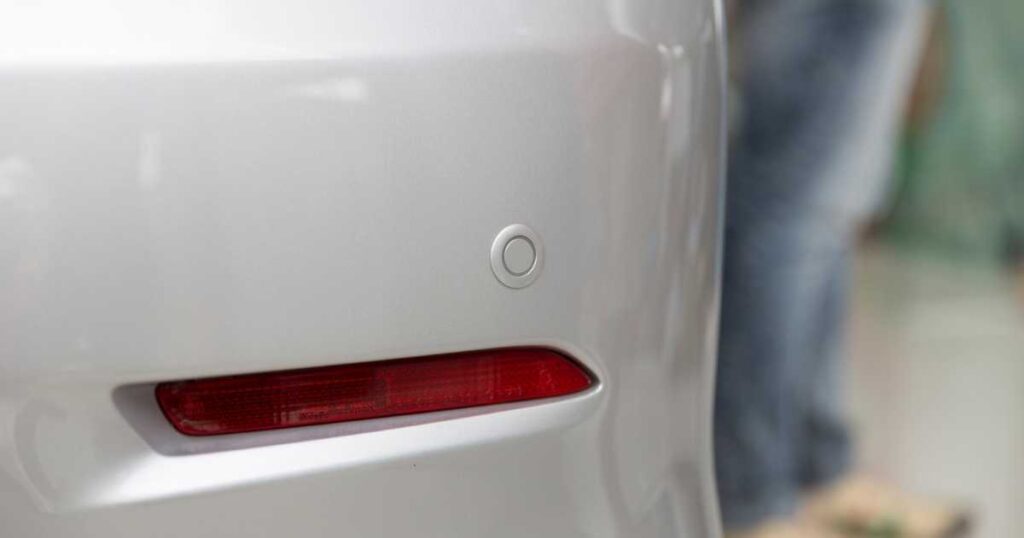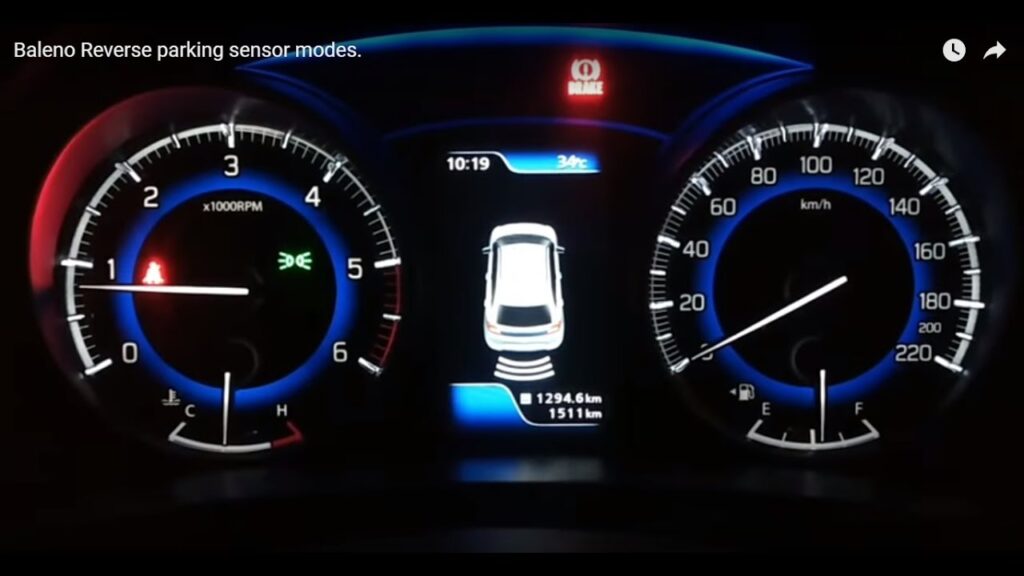The Baleno reverse parking sensor may not work due to a faulty connection or sensor malfunction. If you are experiencing issues with your Baleno reverse parking sensor, there could be a problem with the connection or a malfunctioning sensor.
This can make parking more challenging and increase the risk of accidents. We will explore common causes and possible solutions for Baleno reverse parking sensor problems. By understanding these issues, you will be able to address the problem effectively and ensure the safe operation of your vehicle.
So, let’s dive in and troubleshoot your Baleno reverse parking sensor issue.

Understanding Baleno Reverse Parking Sensors
Reverse parking sensors have become an essential feature in modern vehicles, including the popular Baleno model. These sensors are designed to provide drivers with assistance when maneuvering their vehicles in tight parking spaces.
By alerting drivers to obstacles behind them, reverse parking sensors help prevent accidents and minimize the risk of damaging the vehicle or surrounding objects.
Are Reverse Parking Sensors Essential For Vehicles?
- Avoid accidents: Reverse parking sensors act as an extra set of eyes for drivers, detecting obstacles that might not be visible in rearview mirrors. They provide a valuable warning system, enabling drivers to avoid collisions and accidents in crowded parking lots or narrow driveways.
- Enhanced safety: With reverse parking sensors, drivers can confidently maneuver their vehicles without worrying about objects hidden in blind spots. This technology reduces the chance of accidental impacts and promotes overall safe driving.
- Protection for your car: Deep scratches, dents, or damages caused while parking can be expensive to repair. Reverse parking sensors help protect your cherished Baleno from such incidents, ensuring a longer lifespan for your vehicle.
- Peace of mind: Parking can be stressful, especially in tight spaces or busy areas. With reverse parking sensors, drivers can navigate even the trickiest parking spots with ease, reducing stress and providing peace of mind.
How Do Baleno Reverse Parking Sensors Work?
- Ultrasonic technology: Baleno reverse parking sensors use ultrasonic sensors to detect objects behind the vehicle. These sensors emit sound waves and measure the time it takes for the waves to bounce back from the obstacles. Based on the distance calculated, they provide an audible warning to the driver.
- Multiple sensor units: Baleno is equipped with multiple sensor units installed in the rear bumper. These units are strategically placed to cover the entire rear area, effectively sensing any obstacles within their range.
- Alert system: When an obstacle is detected, the reverse parking sensor system alerts the driver through a series of beeps. The frequency of the beeps increases as the vehicle gets closer to the object, allowing the driver to gauge the distance accurately.
- Visual display: Some Baleno models may also include a visual display that shows the distance and position of the obstacles in real-time. This feature provides an additional layer of convenience and assists drivers in parking with precision.
- Activation and customization: Reverse parking sensors are activated automatically when the vehicle is shifted into reverse gear. Additionally, some models allow drivers to customize the sensitivity or deactivate the system temporarily if desired.
Reverse parking sensors in the Baleno allow drivers to park with ease and confidence, enhancing safety and preventing unwanted accidents.
Understanding how these sensors work and their importance can help you make the most out of this valuable feature. So next time you park your Baleno, rely on the reverse parking sensor system to effortlessly navigate any parking situation.
Baleno parking sensor not working
The issue with the Baleno parking sensor might be due to various reasons. It could be a wiring problem, a sensor malfunction, or even a software glitch. To troubleshoot, you can start by checking the wiring connections, ensuring they are secure and free from any damage. If that doesn’t resolve it, you might want to inspect the sensors themselves or the control module.
Common Issues With Baleno Reverse Parking Sensors
| ssue | Description |
|---|---|
| Sensor Calibration Failure | Inaccuracies due to improper calibration |
| Electrical Malfunctions | Problems with wiring, fuses, or sensor connections |
| Obstacle Interference | External factors like dirt, mud, or snow affecting sensor accuracy |
| Sensor Damage | Physical damage from accidents or impacts affecting sensor functionality |
| System Compatibility | Conflicts with aftermarket modifications or accessories impacting sensor performance |

How to Install A New Baleno Reverse Parking Sensor?
To install a new reverse parking sensor on a Baleno, follow these steps:
- Identify a suitable location on the rear bumper for the sensor. Ensure it has a clear line of sight and is not obstructed by any features.
- Drill holes for the sensor according to the manufacturer’s specifications. Use a measuring tape to ensure precision.
- Connect the sensor wiring to the vehicle’s electrical system. This typically involves connecting to the reverse light circuit for power.
- Mount the control unit in a secure location within the vehicle. This is usually done inside the trunk or under the dashboard.
- Run the sensor wires from the bumper to the control unit, securing them along the vehicle’s frame to prevent any damage.
- Test the system to ensure proper functionality. Engage the reverse gear, and the sensor should activate, providing audible or visual alerts if an object is detected.
Remember, refer to the specific instructions provided by the parking sensor manufacturer for your Baleno model.
Does Suzuki Baleno Have Parking Sensors?
Yes, the Suzuki Baleno is equipped with parking sensors for easy and convenient parking.
Clean parking sensor baleno message
The clean parking sensor message for a Baleno can be initiated through the vehicle’s settings menu. Navigate to the settings option on the infotainment system, then locate the parking sensor or safety settings. Within this menu, you should find an option to clean or calibrate the parking sensors. Follow the on-screen instructions to complete the process.
How to clean parking sensors in Baleno?
To clean the parking sensors on a Baleno, you will need the following items:
- A soft microfiber cloth
- A mild soap solution
- A bucket of warm water
Instructions:
- Park your car in a well-ventilated area.
- Wet the microfiber cloth with the mild soap solution.
- Gently wipe the parking sensors clean, using a circular motion.
- Be careful not to get any water inside the sensors.
- Rinse the microfiber cloth with clean water and wipe the sensors dry.

Conclusion
Overall, it is clear that if your Baleno reverse parking sensor is not working, it can be a frustrating and potentially dangerous issue. However, there are steps you can take to troubleshoot and possibly fix the problem. First, check the sensor for any physical damage or loose connections.
Clean the sensor and ensure it is free from dirt or debris that may be hindering its functionality. If the issue persists, consider resetting the sensor or seeking professional help. Remember, regular maintenance and care of your Baleno’s parking sensor can help prevent such problems in the future.
Taking the time to address this issue promptly can enhance both the safety and convenience of parking your Baleno. Stay vigilant and ensure your reverse parking sensor is always in optimal working condition.
